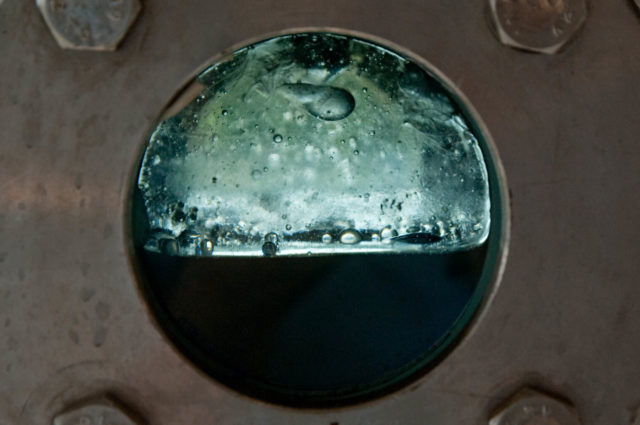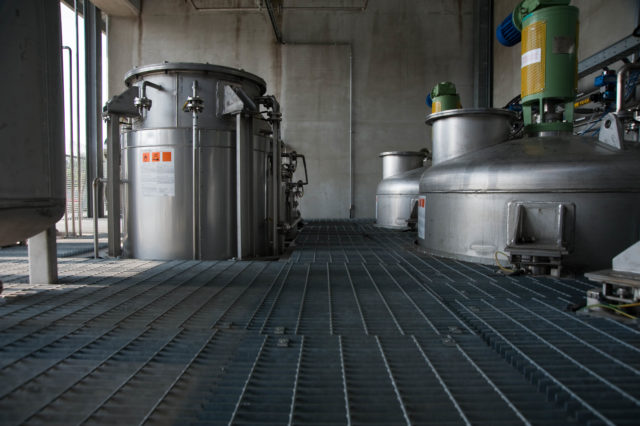Peracetic Acid (PAA) is an organic liquid compound which is frequently used in the food industries thanks to its biocidal properties, due to its high oxidation power. Formulations at high concentration, instead, are used for oxidation reactions especially in the pharmaceutical field, as an alternative to traditional oxidants.
PAA aqueous solutions are very stable at normal stocking conditions, but decompose rapidly when in contact with unsuitable or incompatible materials. For this reason, it is necessary to choose the right materials that the product will come into contact with; from stocking tanks to filling hole and drainpipe, from valves to dosing pumps.
Peracetic acid-based disinfectants are made of mixtures of acetic acid, hydrogen peroxide and peracetic acid. In terms of chemistry, PAA belongs to the family of peroxides/peroxiacids. Its formation is due to the fact that the acetic acid molecule incorporates an extra oxygen atom, given by hydrogen peroxide, within its carboxyl group–COOH, leading to the formation of –COOOH. As a consequence the molecule becomes extremely reactive; its tendency is to separate, through the phenomenon of hydrolysis, into acetic acid and hydrogen peroxide. The hydrolysis phenomenon occurs naturally, but it is increased by the dilution of the solution, by high temperatures and contact with alkaline pH. The freed hydrogen peroxide can decompose as well into water, freeing oxygen.
Product Catalogue
PROMOX P 500
PROMOX P 505
PROMOX P 510
PROMOX P 540
PROMOX P 550
The new classification connected to Reach Regulation (1907/2006/CE), Regulation n. 1272/2008/CE (CLP), Regulation n. 790/2009/CE (including Adjustment to Technological Development amendment to regulation n. 1272/2008/CE) is due to be released, and our evaluation of chemical-physical-toxicological data is due to be completed. In this context, we provide copy of the currently in force classification of acid solutions, in accordance with Directive 67/548/CEE (Classification, Packaging and Labelling of Dangerous Substances) and subsequent amendments; Directive 99/45/CE (Classification, Packaging and Labelling of Dangerous Preparations) and subsequent amendments, and Directive 1999/457CE.
ADR is an agreement sealed for the EU by the United Nation Economic Commission in Geneva.Thanks to ADR, most European countries defined common regulations for the transport of dangerous goods on roads within their territory and across borders. Article two is crucial in that it foresees that, with the exception of certain excessively dangerous goods, most dangerous goods can be transported as goods for international transport in road vehicles.



